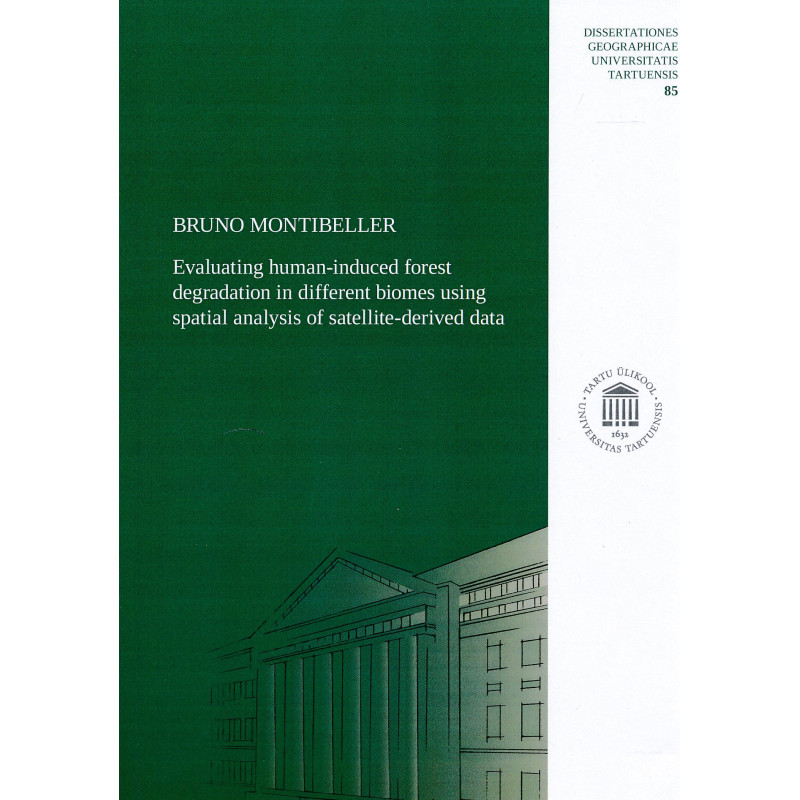



Tartu : University of Tartu Press, 2022
ISBN: 9789916270318
111 p. : ill. ; 25 cm
Dissertationes geographicae Universitatis Tartuensis ; 85
Softcover new book
Doctoral theses defended at the University of Tartu, summary in Estonian
Forests are strongly impacted by human activities. While the deforestation is very likely the most common examples of human impact on forested areas, the remaining standing forests are susceptible to other types of direct or indirect forest degradation by humans. The direct human-induced impacts can be exemplified by forest fragmentation or selective logging while the indirect human-induced impacts can be related to the changes in the ecosystem services (e.g., carbon and water cycling) induced by anthropogenic climate change. The aim of this thesis was to evaluate two processes related to forest degradation: (i) fragmentation of tropical forest cover in the Brazilian Amazon and (ii) changes in forest evapotranspiration over/across the Baltic countries and the carbon cycle in undisturbed forest areas across Europe. Satellite derived data and spatial analyses were used to assess the impacts of forest degradation in these three different case studies. The results of this thesis showed that although the anti-deforestation initiatives have played an important role in reducing deforestation in the Brazilian Amazon region, the forest fragmentation has increased mainly because of the decrease in the size of forest loss patches and the spatial shift into areas previously isolated areas. Hence, more forest areas are potentially being degraded because of the edge effects (e.g., tree mortality) caused by the fragmentation. For the Baltic region, the results indicated an intensification of the evapotranspiration rates over undisturbed forest areas. The intensification occurred mainly during spring and early autumn months because of the longer growing season induced by the increasing temperatures during these periods. Changes in the climate patterns were also the potential cause for changes in the carbon assimilation rates over the European forests. Approximately 25% of the undisturbed European forests showed reduced total carbon assimilation. That shows the vulnerability and incapacity of certain forest areas to act as carbon sink.